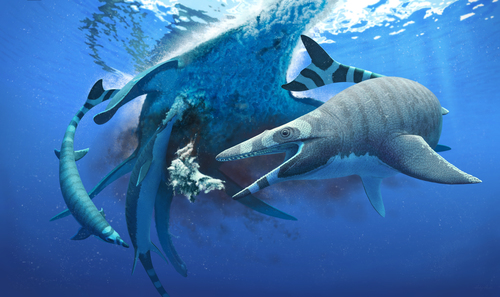
New Shark-Like Marine Reptile Discovered in Morocco
Palaeontologists have discovered a new shark-like reptile that’s believed to have lived 66million years ago.
The jawbone and teeth found in Morocco, North Africa are thought to belong to a strange and previously unknown species of mosasaur.

Mosasaurs are marine reptiles that existed from the end of the age of dinosaurs. Although they are not dinosaurs, they are distant relatives of monitor lizards and snakes.
The new species, named Xenodens (don’t ask us to say it!) is thought to have been a porpoise sized land-based marine reptile that had shark-like teeth arranged in a saw-like cutting blade, which it used to eat large prey and perhaps scavenge carcasses.
The bladelike teeth of Xenodens have never been seen before in any mosasaur species or other reptiles, and the novel dental specialisation adds to the diversity of late Maastrichtian mosasaurids and marine reptiles.

Speaking about the new discovery, Dr. Nicholas R. Longrich, from the University of Bath said:
Our best guess is that the specialised teeth served to allow it to cut large fish into bite-sized pieces, and perhaps scavenge from large carcasses, as dogfish and sleeper sharks sometimes do. But we can’t rule out other feeding strategies or other prey. It could probably take a huge range of foods, like modern dogfish, but the bladelike teeth allowed it to take much larger prey than it otherwise could.
This discovery is fascinating because it tells us how we can study marine reptile palaeontology to find out more about specialisation, diversity and mass extinction.
Initially restricted to coastal environments; a volcanic eruption and extinction event enabled the Mosasaurs to evolve a huge range of species by the end of the Cretaceous, but eventually, it’s believed that they succumbed to the same fate as the dinosaurs when the Chicxulub asteroid hit the earth.
The discovery is described in a paper published online on 19th January 2021 in the Cretaceous Research journal.
To view more of our interesting, funny and local articles – click here.





